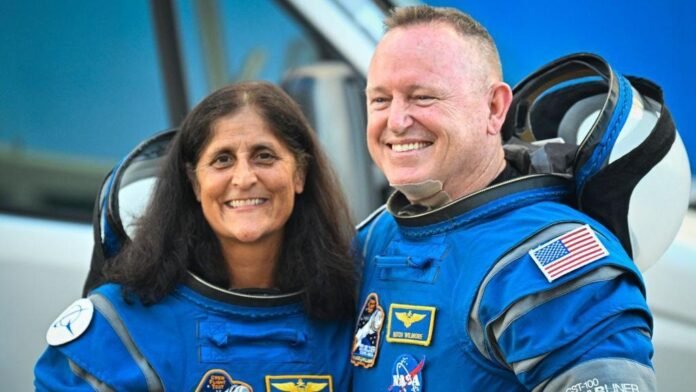Sunita Williams, one of NASA’s most renowned astronauts, along with her colleague Butch Wilmore, has unexpectedly prolonged her stay aboard the International Space Station (ISS). The mission, which began on June 5, was scheduled to be a 10-day stay in space. However, the astronauts’ return has been delayed due to technical issues with Boeing’s Starliner spacecraft.
The Starliner Struggles
Williams and Wilmore launched aboard Boeing’s Starliner spacecraft, a vehicle designed to transport astronauts between Earth and the ISS. Unfortunately, multiple problems have arisen, causing the mission’s extension. Among the issues are helium leaks, a malfunctioning propellant valve, and failures in five of the 28 thrusters. These mechanical complications have left the astronauts temporarily stranded in space.
Despite the challenges, Boeing’s Starliner team and NASA engineers are working diligently to resolve the spacecraft’s technical snags. Efforts are underway to fix the Reaction Control System thrusters, which are crucial for the spacecraft’s safe reentry into Earth’s atmosphere. Testing is currently taking place at New Mexico’s White Sands Missile Range, while NASA’s Marshall Space Flight Center is also assisting with troubleshooting.
The potential return date was tentatively set for August, but now it’s already half September. For Boeing, the success of this mission is critical, as it serves as the final test before NASA certifies the Starliner for routine astronaut flights.
The Astronauts’ Resilience
Despite being caught in an uncertain situation, both Sunita Williams and Butch Wilmore have maintained a positive outlook. Williams expressed confidence in the Starliner’s ability to bring them home, saying, “I have a real good feeling in my heart that this spacecraft will bring us home, no problem.” Wilmore echoed her sentiments, stressing their commitment to the mission. “Failure is not an option,” he said. “We’re staying, and we’re going to test it. That’s what we do.”
Not the First Extended Stay in Space
Williams and Wilmore are far from the first astronauts to face an extended mission in space. NASA has often argued that extended missions allow researchers to study the effects of long-duration spaceflights on human health. Such experiences have become part of space exploration’s evolving narrative, with several notable cases in history.
- Sergei Krikalev: One of the most famous examples is Russian cosmonaut Sergei Krikalev, who stayed in space for 311 consecutive days during a mission on the Mir space station from 1991 to 1992. His stay was prolonged due to the collapse of the Soviet Union, earning him the nickname “the last Soviet citizen.”
- Frank Rubio: More recently, NASA astronaut Frank Rubio spent 371 days in space— the longest single spaceflight by a U.S. astronaut. His return was delayed due to a coolant leak in his Soyuz spacecraft, forcing him to catch a ride on a different vessel.
- Columbia Shuttle Disaster: The crew of Expedition 6 to the ISS, which included astronauts Kenneth Bowersox, Donald Pettit, and Russian cosmonaut Nikolai Budarin, also faced an extended stay. After the Columbia space shuttle disaster in 2003, which claimed the life of Indian-American astronaut Kalpana Chawla, their return was delayed by three months.
NASA’s Assurances: Not ‘Stuck’ in Space
NASA has clarified that while Williams and Wilmore’s return has been delayed, they are not “stuck” in space. The astronauts are safe aboard the ISS and are continuing to work alongside the Expedition 71 crew. They are conducting valuable research and performing essential maintenance on the station. NASA has also refrained from labeling the situation as a “mishap,” emphasizing that mission changes are part of the space exploration process.
In a recent interview, Wilmore shared that life aboard the ISS has been enjoyable despite the prolonged stay. “It’s a great place to be, a great place to live, and a great place to work,” he said.
A Routine Risk in Space Exploration
Space exploration comes with inherent risks. As NASA Administrator Bill Nelson noted, “test flights by nature are neither safe nor routine.” Extended stays are a recognized challenge that astronauts are prepared for, with missions providing opportunities for extended research and valuable data collection.
For Sunita Williams and Butch Wilmore, this mission is a testament to their resilience and the adaptability of modern astronauts. While they wait for their return to Earth, they continue to contribute to the scientific understanding of space exploration, knowing that this experience will pave the way for future astronauts.


